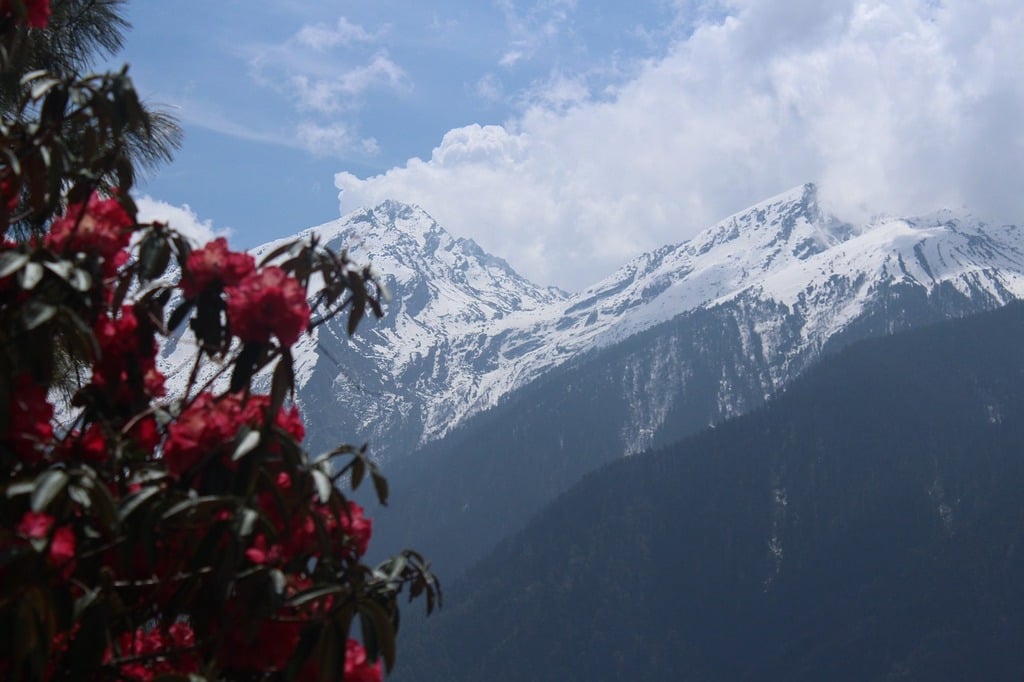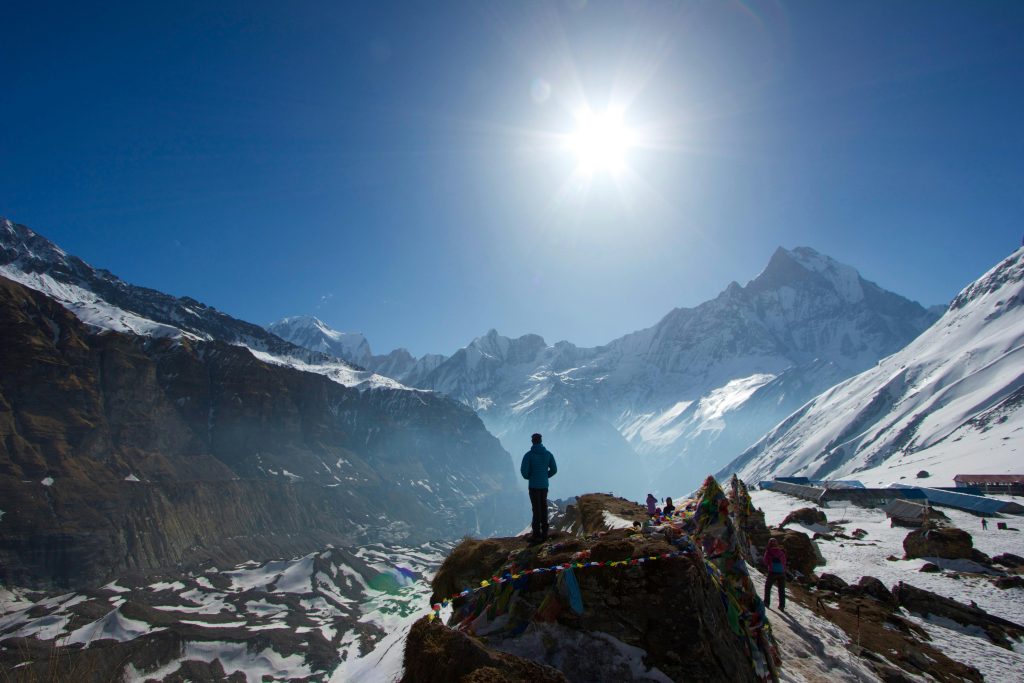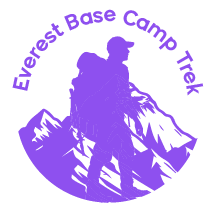What Are the Best Times of Year to Go to Annapurna Base Camp Trek?
Planning a trek to Annapurna Base Camp is exciting, but picking the best time to go can make a big difference in your experience. What Are the Best Times of Year to Go to Annapurna Base Camp Trek? The right timing can affect everything from the weather and trail conditions to the crowds you’ll encounter and the beauty you’ll see along the way. Whether you prefer clear skies and blooming flowers, snowy peaks, or a quieter trail, knowing when to go can help you get the most out of your adventure. This guide will walk you through the best times to visit based on weather patterns, crowds, festivals, and your personal preferences.
Seasonal Weather Patterns
Spring (March to May)

Weather Conditions
Spring is one of the best times to go on the Annapurna Base Camp Trek. During this season, the weather is usually mild and comfortable. You can expect plenty of sunshine and clear skies, which makes trekking enjoyable. The temperatures are generally pleasant, so you won’t be too hot or too cold.
Scenic Highlights
One of the main attractions of trekking in spring is the beautiful display of rhododendrons and other wildflowers. These flowers are in full bloom during this time, adding vibrant colors to the landscape. The combination of clear skies and blooming flowers creates a picturesque environment, making your trek even more memorable.
Autumn (September to November)
Weather Conditions
Autumn is another ideal time for the Annapurna Base Camp Trek. The weather is typically very stable during this season. You can enjoy clear skies and cooler temperatures with less chance of rain. This stable weather allows for a more comfortable trekking experience and ensures that you have excellent visibility of the mountain ranges.
Scenic Highlights
The views of the Annapurna and Dhaulagiri ranges are especially breathtaking in autumn. The crisp air and clear skies provide some of the best visibility of these majestic mountains. The cooler temperatures also make trekking more enjoyable, as you won’t have to deal with the intense heat or heavy rain.
Monsoon Season (June to August)
Challenges of Trekking
Trekking to Annapurna Base Camp during the monsoon season (June to August) can be quite challenging. Here’s why:
Heavy Rainfall
The monsoon season brings heavy rainfall to the region. This means you can expect frequent and sometimes intense downpours. The rain can make the trails muddy and slippery, which can be difficult and unsafe for trekking.
Landslides
The heavy rain also increases the risk of landslides. The soil and rocks on the trails can become unstable, and there’s a higher chance of landslides blocking the path or making it dangerous to continue.
Leeches
Leeches are common during the monsoon. These small, slimy creatures can be found on the trails and are attracted to wet conditions. They can be quite unpleasant to deal with, so it’s important to be prepared if you choose to trek during this time.
Scenic Highlights
Despite these challenges, the monsoon season has its own unique beauty:
Lush Greenery
The heavy rains make the landscape incredibly lush and green. The forests and fields are vibrant and full of life, with the vegetation looking more vibrant than at other times of the year. If you appreciate rich, green scenery, this can be a beautiful aspect of trekking during the monsoon.
While the monsoon season offers a lush and vibrant landscape, the heavy rains, risk of landslides, and presence of leeches make it a less ideal time for trekking to Annapurna Base Camp. If you decide to go during this season, be prepared for these challenges and plan accordingly.
Winter Conditions (December to February)

Challenges of Trekking
Trekking to Annapurna Base Camp in winter (December to February) comes with its own set of challenges. Here’s what you need to know:
Snow and Cold Temperatures
Winter brings cold temperatures to the region, especially at higher altitudes. You can expect freezing temperatures, and there may be snow on the trails. This means you’ll need to be prepared for very cold weather, which can make trekking more difficult. Snow can also cover parts of the trail, making it harder to see and navigate.
Potential for Snowfall
There is also a chance of additional snowfall during winter. While this can make the landscape look magical and white, it can also make trails slippery and harder to walk on. Trekking in these conditions requires careful planning and proper gear.
Scenic Highlights
Despite these challenges, trekking in winter has its own unique advantages:
Serene and Less Crowded
One of the big benefits of trekking in winter is that the trails are less crowded. Many people avoid trekking during this time due to the cold, so you can enjoy a more peaceful experience with fewer fellow trekkers around.
Stunning Snowy Landscapes
Winter transforms the landscape into a snowy wonderland. The views of the mountains covered in snow can be breathtaking. If you enjoy winter scenery, the snowy peaks and frosted trees create a beautiful and serene environment.
Preparation Tips
If you decide to trek during winter, it’s crucial to be well-prepared. Make sure you have warm clothing, insulated boots, and gear to handle snow and cold temperatures. Proper preparation will help you stay safe and enjoy the stunning winter landscapes.
Crowds and Popularity
Peak Season: Spring and Autumn
Busy Trails
During peak seasons, which are spring (March to May) and autumn (September to November), the Annapurna Base Camp Trek is very popular. This means the trails can be quite busy with many other trekkers. If you don’t mind sharing the trail with others and enjoy a lively atmosphere, this can be a great time to go.
Optimal Weather
The big advantage of trekking during these peak seasons is the weather. In spring and autumn, the weather is usually clear and comfortable. You’ll have good visibility of the mountains and generally pleasant temperatures for trekking. This makes the trek more enjoyable and less risky.
Off-Peak Times: Monsoon and Winter
Less Crowded
If you prefer more peace and quiet, you might consider trekking during the off-peak times, such as the monsoon season (June to August) or winter (December to February). During these times, there are fewer trekkers, so you’ll have more solitude and fewer people on the trails.
Harsh Conditions
However, trekking during off-peak times comes with some trade-offs. In the monsoon season, you’ll face heavy rain, muddy trails, and the risk of landslides. In winter, the trails can be covered in snow and very cold, which can make trekking more challenging. So, while you’ll enjoy less crowding, you’ll need to be ready for tougher conditions.
If you want good weather and don’t mind sharing the trails with others, spring and autumn are ideal. If you prefer a quieter experience and are prepared for harsher conditions, consider trekking during the monsoon or winter.
Festivals and Local Events
Impact of Local Festivals
Nepal is rich in cultural festivals, and two major ones are Dashain and Tihar. Here’s how these festivals might affect your trekking experience:
Dashain (September to October)
Dashain is one of Nepal’s biggest and most important festivals. It usually happens between late September and mid-October. During Dashain, locals celebrate with family gatherings, special foods, and religious ceremonies.
- Crowded Teahouses: Because Dashain is a major holiday, teahouses (places where you stay and eat along the trail) might be more crowded as local people and trekkers both gather for the celebrations. This could make finding a place to stay a bit more challenging.
- Altered Schedules: Some local services and transportation might be affected because people take time off to celebrate. This could lead to changes in the usual trekking schedule or difficulty in getting supplies.
Tihar (October to November)
Tihar, also known as Deepawali, is another major festival that typically takes place in late October or early November. It is a time of vibrant celebrations, including lighting lamps, exchanging gifts, and festive meals.
- Festive Atmosphere: Tihar brings a lively and colorful atmosphere to the region. You might enjoy experiencing local traditions and celebrations along your trek, which can add a unique cultural touch to your journey.
- Potential for Crowds: Similar to Dashain, Tihar can also lead to busier teahouses and more people on the trails. This might make the trek feel more crowded and could affect your experience, especially if you prefer a quieter trek.
Experiencing festivals like Dashain and Tihar can offer a rich cultural experience and a chance to see local traditions up close. However, be prepared for potential crowds in teahouses and possible changes to local schedules. If you enjoy cultural events and don’t mind a bit more hustle and bustle, trekking during these festivals can be a memorable experience. If you prefer a quieter trek, you might want to plan your trip outside of these major festival periods.
Trek Duration and Altitude Acclimatization
How Timing Affects Acclimatization
When you’re trekking to Annapurna Base Camp, acclimatization is very important. This means getting your body used to the higher altitude to avoid altitude sickness. The time of year you choose to trek can impact how easily you adjust to the altitude.
Spring and Autumn
- Gradual Acclimatization: Spring (March to May) and autumn (September to November) are the best times for a gradual acclimatization process. During these seasons, the weather is milder and more stable. This allows you to trek at a comfortable pace and take the necessary breaks for your body to adjust to higher altitudes.
- Comfortable Conditions: The clear skies and moderate temperatures in these seasons make it easier to manage altitude changes. This can help you stay comfortable and focused on gradually adjusting to the thinner air as you climb higher.
Winter
- Challenging Conditions: In winter (December to February), the conditions are much harsher. The cold weather and snow can make the trek more difficult and physically demanding. This can affect how well you acclimatize because the tougher conditions may force you to move faster or take fewer breaks.
- Shorter Trek Duration: Due to the cold and snow, the trek might take longer as you’ll need to be more cautious on the trails. The extreme cold can also make it harder to maintain your usual trekking pace, which could impact your overall trek duration and how your body adjusts to the altitude.
If you want a more comfortable and gradual acclimatization process, spring and autumn are the best times to trek. The milder weather allows you to adjust more easily to the altitude. Winter presents more challenges with cold temperatures and snow, which can make acclimatization harder and possibly lengthen your trek. Choosing the right time for your trek can help you manage altitude changes better and enjoy your journey to Annapurna Base Camp.
Personal Preferences and Goals
Reflect on Your Preferences
Choosing the best time to trek to Annapurna Base Camp depends a lot on what you personally enjoy and want from your trekking experience. Here are some things to think about:
Avoiding Crowds
- If you prefer fewer people around, you might want to avoid the peak seasons of spring (March to May) and autumn (September to November). These times are very popular, so the trails and teahouses can be crowded. If you like a quieter and more peaceful trek, consider going in the off-peak times like winter (December to February) or monsoon (June to August).
Experiencing Local Festivals
- If you’re interested in local culture and festivals, planning your trek around major festivals like Dashain (September to October) or Tihar (October to November) can be exciting. You’ll get a chance to see and participate in local celebrations, which adds a unique cultural experience to your trek. Just be aware that these festivals can also lead to busier trails and teahouses.
Enjoying Natural Beauty
- If you love seeing beautiful scenery, think about what you want to see during your trek.
- Spring: This season is great for seeing colorful wildflowers and lush greenery. The trails are covered with blooming rhododendrons, making the landscape vibrant and lively.
- Autumn: This time offers clear skies and crisp air, giving you stunning views of the snow-capped mountains. The weather is usually stable and perfect for taking in the breathtaking scenery.
- Winter: If you like snowy landscapes, winter will transform the region into a snowy wonderland. It’s beautiful but comes with cold and challenging conditions.
Consider Your Goals
Think about what’s most important for your trekking experience:
- Are you looking for a tranquil experience with fewer people? Go during off-peak times.
- Do you want to see local culture in action? Plan your trek around local festivals.
- Is stunning natural beauty your main goal? Choose the season that offers the scenery you most want to see.
Your personal preferences and goals play a big role in deciding when to trek to Annapurna Base Camp. Whether you want to avoid crowds, experience local festivals, or enjoy specific types of scenery, reflecting on these preferences will help you choose the best time for your trek.
Choosing the best time for your Annapurna Base Camp trek depends on what you want to experience and enjoy most. Spring and autumn offer ideal weather and beautiful scenery, making them great for most trekkers. However, if you seek fewer crowds and don’t mind challenging conditions, winter or monsoon could be right for you. Local festivals can add a cultural touch but might bring more people. Reflecting on your preferences and goals will help you decide the perfect time to make your trek memorable. No matter when you go, the Annapurna Base Camp offers stunning views and a rewarding experience.
Experience the Magic of Annapurna Base Camp!
Your adventure to Annapurna Base Camp starts here with EBC Trek Dot Net. From selecting the perfect time to trek to ensuring you have all the information you need, we’re dedicated to making your journey exceptional.
Get in Touch with Us Today!
Explore our offerings and start planning your trek by visiting EBC Trek Dot Net or reaching out to us directly. Let’s make your trekking dreams come true!
